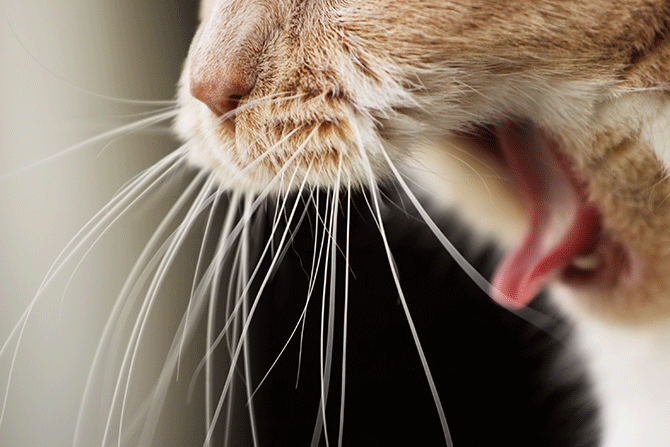Hack. Hack. Cough. Retch. Splat. Hairballs are unpleasant for everyone. Your cat doesn’t seem to enjoy producing them, and you sure don’t like cleaning them up. But what are hairballs, exactly?
A hairball is a collection of fur that has accumulated as a result of your cat’s grooming. It’s completely normal and most of the time completely harmless, but there is a risk that a hairball will get to be too big and cause a blockage. Cat owners should also keep an eye on how often a cat is producing hairballs, as if it’s more than once a year then it might be too much. So here is everything else you need to know about hairballs.
How do hairballs form?
Cats are constantly shedding and regrowing fur. As they groom, they pick up and ingest loose fur. Most of this fur gets digested and is released through stool, however some will not digested and come out through hairballs. Some cats produce more hairballs than others, but it should still only happen no more than once or twice a year.
Long-haired cats produce more hair than their short-haired brethren. Younger cats who haven’t quite figured out how to thoroughly groom might not produce as many hairballs as an expert adult cat. In the spring when the weather changes, cats shed more and ingest more fur. Regardless, if your cat is producing more than one or two hairballs a year, there may be an underlying health issue that should be checked by a vet.
Treatments
Fortunately, there is a lot you can do to make digesting fur easier on your cat. This will also make it easier on you, because nobody likes cleaning up hairballs! The important thing is to make it so that there is less hair for your cat to digest, or so the hair that is ingested comes out the other side easily. Hairballs aren’t pleasant for your cat, and could potentially be dangerous, so it’s a good idea to be proactive.
Brushing
Brushing is a great way to prevent hairballs and lessen how often they occur. The more hair that ends up on the brush, the less hair ends up in your cat’s digestive system. The best practice is to rub your feline friend down with a soft rubber brush first, and then use a fine-toothed comb to finish up. Doing this regularly will prevent hair from being consumed, but also is a great way to bond with your cat. They love getting brushed and pampered, and will look forward to their regular “spa treatments”.
Diet
There are many hairball cat food products on the market from which to choose. You’ll want one with ingredients that aid in developing strong stomach bacteria that breaks down hair in the digestive system. A fruit and vegetable extract called FOS, along with carbohydrate mixtures should do the trick nicely. These foods also help your cat digest and absorb nutrients into their bodies and helps with overall digestive tract health.
You may notice a positive difference in the smell of the litter box. Fibre is also a key to promoting healthy digestion. You can supplement your cat’s regular food with fibre-rich foods like asparagus, canned pumpkin, and oat grass.
Lifestyle
Lifestyle changes may help as well. Sometimes cats become obsessive groomers, which leads to more hair ingestion, which again leads to more hairballs. If your cat has become obsessive, it may be because he’s bored. Engage your cat in play to keep him entertained and take his focus off of grooming. This may happen especially as they get older and are more sedentary. Keep an eye on your cat for any signs of this.
Danger signs
All animals with fur will ingest their hair, and cats will ingest more because of their natural grooming instincts. Luckily, their digestive tracts are made to help with moving that fur along. However, sometimes hair build-up can be so great that your cat could be at serious risk. If the hair builds up too fast before your cat can expel it, then it may prevent them from eating or defecating. If you notice your cat being lethargic and not taking any food or treats, take her to the vet immediately.
You should also keep your house clean to minimize danger. Strings and elastic bands left around the house are tempting for cats. If ingested, they could get caught up in the hair that’s collecting in the digestive tract and could potentially cause serious issues. Keeping your house clean may also help keep your cat clean, which would mean fewer grooming sessions.
Grooming is something cats instinctively do. It’s one of the great things about owning a cat since it makes them such a low-maintenance pet. Unfortunately, we have to take the good with the bad, and hairballs are a byproduct of that fastidious grooming nature. With a little care and attention, we can make sure that hairballs are a minor inconvenience for both ourselves and our cats.







Leave A Comment